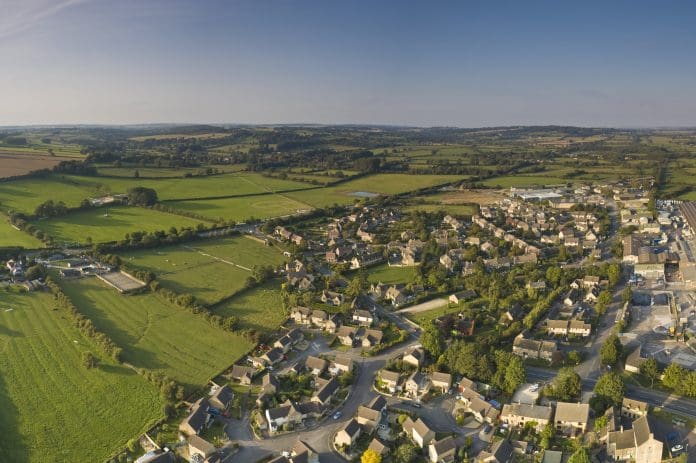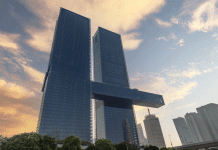With the UK’s ongoing housing crisis seeming to go from bad to worse, could refurbishment be the answer to meeting UK housing demand? Carl Yale, Lovell, explores
The government confirmed that it is unlikely to meet its commitment to deliver 300,000 new homes a year by the mid-2020s.
Rather than focus on developing rural areas for housing provision, Michael Gove has said more should be made of the empty buildings “in the heart of Britain’s great cities” where he says there is more housing demand and support.
Understanding local housing demand is crucial
While there are arguments both for and against these ideas, understanding the local housing demand in any specific area is important.
This includes demand for affordable homes, and temporary and emergency accommodation – not just new build developments for first-time buyers.
Councils are commonly challenged with how to make best use of their building stock, particularly within city centres.
By reidentifying empty buildings ripe for redevelopment or refurbishment, we can start to see these as the “hidden homes” the government is seeking. Not to mention the added value this could bring to local authorities, using two key methods; building conversions and rooftop extensions.
These homes can be delivered at pace, meaning that we are able to feed into government promises to work towards current housing shortages, and create much-needed affordable and social housing – all while protecting valuable greenbelt land for future generations.
The benefits outweigh the challenges
There will be redundant, under-used, or under-performing buildings within any local authority portfolio that must be managed within disposal strategies – i.e. decisions will need to be made about what to do with these buildings.
However, this provides the opportunity to think creatively about how these buildings can be repurposed whilst also meeting the specific needs of local people.
Not-for-profit organisation Habitat for Humanity recently announced that local authorities across England, Scotland and Wales have enough vacant commercial properties to create more than 19,500 homes.
The research was conducted by the campaign group Empty Homes Network, which is mostly made up of local authority employees who used Freedom of Information (FOI) requests to source the figures.
The data estimated the spaces could be used to ‘create over 16,000 residential units through the conversion of vacant office space, and 3,500 residential units through the conversion of empty retail space’.
The challenges of using refurbishment to meet UK housing demand
There are, of course, challenges that come with these types of projects: from site constraints and community buy-in, to existing plant equipment and service utilities that may cause obstructions or need diverting or relocating.
The obvious benefit is that the buildings are already there, alleviating the need for land acquisition. Reforms to the planning system support this approach, allowing us to make the most of these hidden homes in months rather than years.
Revitalising these buildings does not just remove potential eyesores and put underutilised spaces back into effective use, it revitalises spaces prone to anti-social behaviour and can also act as a multiplier effect – leading to further regeneration in the area.
As well as building conversions, we can create “hidden homes” through rooftop expansions to existing stock. When we are ‘building up’ with these rooftop additions, the whole building benefits.
The façade of a building may be upgraded, leading to increased kerb appeal. Communal spaces such as play areas and facilities like parking can be added or upgraded – for example, a building that previously did not have a lift may have a new one fitted as part of the work.
We are also afforded the opportunity to improve building safety and security, ensuring that the latest guidance and fire regulations are met.
Plus, we can look at how to improve the energy efficiency of any building, helping to create overall savings and work towards the UK’s Net Zero carbon goal.
Meeting specific local requirements
Another key thing we must examine is the suitability of homes. Housing need manifests itself in a variety of ways, such as an increased level of crowding and acute affordability issues.
What is needed on a local level varies greatly not just from region to region, but from borough to borough.
It may be that housing provision is there but is no longer fit-for-purpose, whether it’s no longer performing well from a rental perspective, outdated and dilapidated, or simply not an archetype of residence in demand. We have the opportunity to improve the efficiency of existing stock, ensuring better returns.
These types of properties lend themselves perfectly to conversions, such as a scheme Lovell worked on in Kettering. The existing building housed 11, three-bedroom flats that had no significant upgrade since being built in the 1920s, leaving them undesirable, difficult to let and making them a hub for anti-social behaviour.
A full, collaborative refurbishment project created eighteen, one- and two-bedroom flats suitable for modern-day standards, which much better reflect the needs of the local housing market.
With ground floor flats being fully accessible for wheelchair users, with ramped access, disabled parking and scooter storage, this also increased the availability of high-quality homes within the area for those with accessibility requirements.
Rationalising housing stock to create central hubs
We must also consider the lasting impact of the pandemic too. It is widely expected that businesses will continue to cut down on their corporate stock in the coming years, as they move to more flexible working.
Many blue light organisations are also looking to rationalise their stock to create central hubs. This will leave some unique properties vacant for a new lease of life – and the potential to use what we have, to add to local housing provision quickly and creatively, without the need for long land acquisition or planning processes.
Lovell completed – and fully-sold – a conversion scheme to revitalise Stourbridge’s former police station, which saw the conversion of the existing building into 31 one and two-bedroom apartments, including unique mezzanine and penthouse apartments.
This landmark scheme is a prime example of the creative and bespoke approach that refurbishment and conversion schemes provide for new home design.
The elegant homes all make use of the original police station features from the 1900s, including striking blue external doors, the full height ceiling of the old courtroom, and even the former cells, to create one-of-a-kind properties that offer the best in modern living.
Ultimately, refurbishment and rooftop extension projects can be a lifeline for councils that are struggling with housing demand and derelict or redundant stock. By balancing the challenges, there is potential to unlock many “hidden home” sites to increase housing development.

















